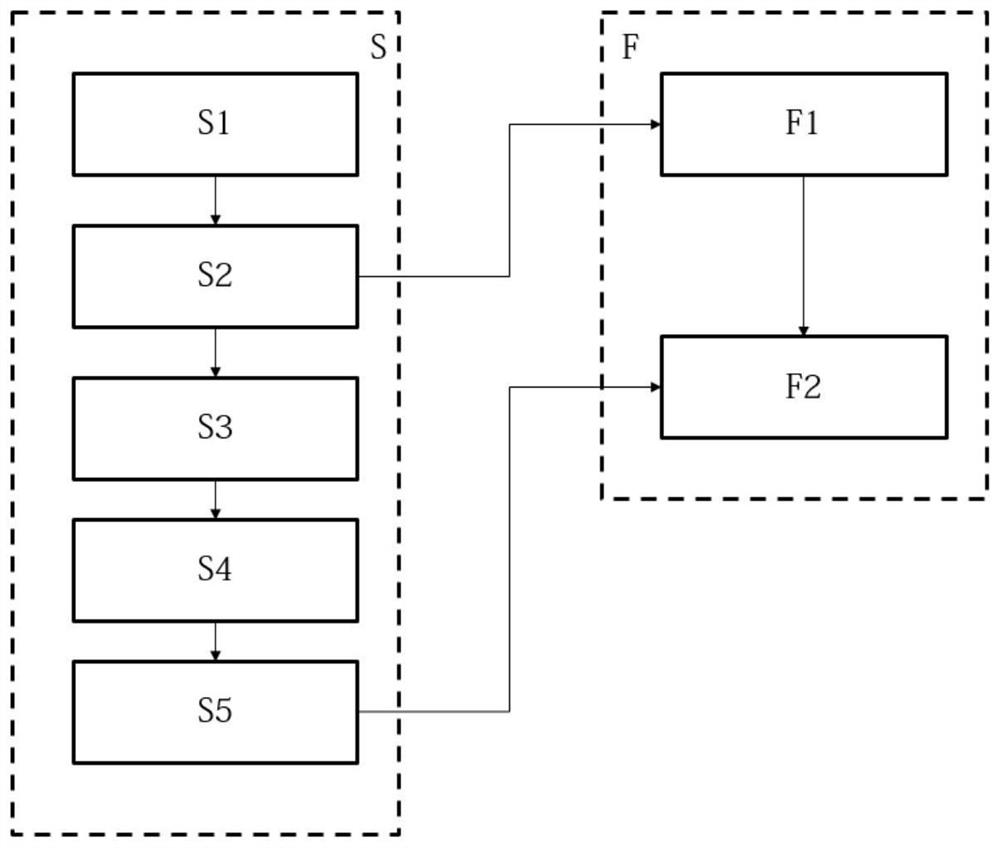Rod-pumped well pump efficiency prediction system and method based on time series data
A technology for pumping wells and forecasting systems, applied in forecasting, nuclear methods, neural learning methods, etc., can solve problems such as low accuracy, difficulty in data collection, and inability to return data in time, so as to achieve accurate and reliable prediction results and avoid The effect of reducing production
- Summary
- Abstract
- Description
- Claims
- Application Information
AI Technical Summary
Problems solved by technology
Method used
Image
Examples
Embodiment 1
[0024] This embodiment discloses a pump efficiency prediction system for pumping wells based on time series data. Pumping wells generally use pump equipment to recover crude oil in the formation to the surface or near-surface gathering and transportation systems, such as oil storage tanks or gathering and transportation pipelines. The prediction system includes an input module 100, a elimination module 200 and a prediction module 300.
[0025]The input module 100 is mainly used to obtain the second working parameter and its corresponding existing pump efficiency, to obtain the first working parameter associated with the pump efficiency of the oil well, and a verification set composed of historical production data. The input module 100 is data-connected with the prediction module 300 through the elimination module 200, and produces a long-term and short-term neural network prediction model based on the second working parameter training data. The input module 100 and the predic...
Embodiment 2
[0042] This embodiment may be a further improvement and / or supplement to Embodiment 1, and repeated content will not be repeated here. In the case of no conflict or contradiction, the whole and / or part of the content of the preferred implementations of other embodiments may serve as supplements to this embodiment.
[0043] There are many factors affecting the pumping efficiency of pumping wells, including: static data of oil wells (reservoir petrophysical properties, wellbore trajectory, etc.); historical dynamic daily data (time, oil pressure, casing pressure, pump depth, theoretical pump displacement, water cut, etc.) well fluid viscosity, dynamic liquid level, etc.); equipment operating condition data (time, current, voltage, power, power factor, instantaneous power consumption, service time, pump efficiency, system efficiency), etc. Accurate selection of the main characteristic parameters affecting oil well pump efficiency is of great significance for analyzing the main co...
Embodiment 3
[0062] This embodiment may be a further improvement and / or supplement to Embodiment 1, 2 or their combination, and repeated content will not be repeated. This embodiment discloses that the whole and / or part of the preferred implementation manners of other embodiments may be used as a supplement to this embodiment under the condition that no conflict or contradiction is caused.
[0063] This embodiment discloses a test method for a long-term and short-term neural network model, which is used for the prediction module 300 to test its trained prediction model. Evaluate the generalization ability of the prediction model on the test set, that is, the pump efficiency prediction effect of the model. The prediction effect evaluation indicators adopted mainly include: determination coefficient R 2 ; mean absolute deviation MAD; mean relative error MAPE; mean square error RMSE; Hill inequality coefficient TIC.
[0064] (1) Determination coefficient R 2 : To characterize the extent to...
PUM
 Login to View More
Login to View More Abstract
Description
Claims
Application Information
 Login to View More
Login to View More - R&D
- Intellectual Property
- Life Sciences
- Materials
- Tech Scout
- Unparalleled Data Quality
- Higher Quality Content
- 60% Fewer Hallucinations
Browse by: Latest US Patents, China's latest patents, Technical Efficacy Thesaurus, Application Domain, Technology Topic, Popular Technical Reports.
© 2025 PatSnap. All rights reserved.Legal|Privacy policy|Modern Slavery Act Transparency Statement|Sitemap|About US| Contact US: help@patsnap.com



